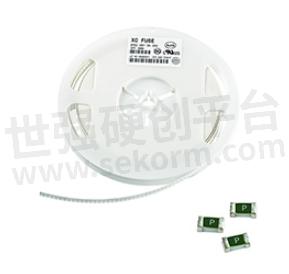How to Protect Circuits with Self Recovery Fuses

When the circuit is working normally, it has no impact on the protected circuit, and its resistance value is very small, with little power consumption on the circuit. When the circuit is abnormal, the current is too high, or there is a short circuit in the circuit, the fuse can quickly block the eXCessive current, protecting the safety of the circuit and other components.
When there is an abnormality in the circuit, the self recovery fuse activates protection. When the protection is activated, the current in the circuit is not completely interrupted but momentarily drops to a very small current. At this point, the equipment on the circuit will stop working. After manually powering off and troubleshooting, when the power is restored, the self restoring fuse will automatically return to the state before protection. Without replacing the fuse, the circuit can resume normal operation. If the fault is not resolved or if the fault reoccurs, the self recovery fuse will still activate protection again after re-energizing. Ordinary disposable fuses can only be protected once when the circuit is overloaded, and after the fuse blows, it needs to be replaced with a new one. But the self restoring fuse is not needed and can be repeatedly used in the circuit. After the fuse acts, it can automatically recover after some time.
Self recovery fuses are made by adding conductive particle materials under high temperature, high pressure, and other conditions using polymer based organic polymers, which are then processed through special processes. Not only does it have overcurrent protection, but it also has overheating protection. Since its appearance, the polymer Lite self recovery fuse has solved the problem of many products requiring frequent replacement of fuses. Compared with other fuses, the quality and reputation of Lite brand fuse products have always been good.

Fig.1
- +1 Like
- Add to Favorites
Recommend
- Self Recovery Performance and Working Process of Self Recovery Fuses
- Application of Overcurrent Protection for Self Recovery Fuses
- Typical Applications of Self Recovery Fuses
- The Relevant Issues That Self Recovery Fuses Can Solve in Security Equipment
- The Application of Self Recovery Fuses in RS485 Interface
- Briefly describe the application field and protective effect of self recovery fuses in automobiles
- The Application of Self Recovery Fuses in the Horn System
- Guidelines for Selecting Self Restoring Fuses and Disposable Fuses
This document is provided by Sekorm Platform for VIP exclusive service. The copyright is owned by Sekorm. Without authorization, any medias, websites or individual are not allowed to reprint. When authorizing the reprint, the link of www.sekorm.com must be indicated.





























































































































































































































































































































































































































































































































































































































































































































































































































































































